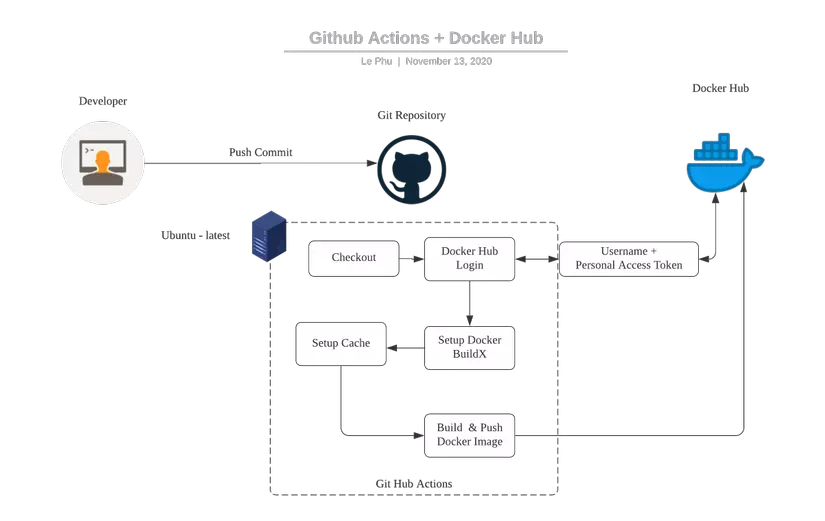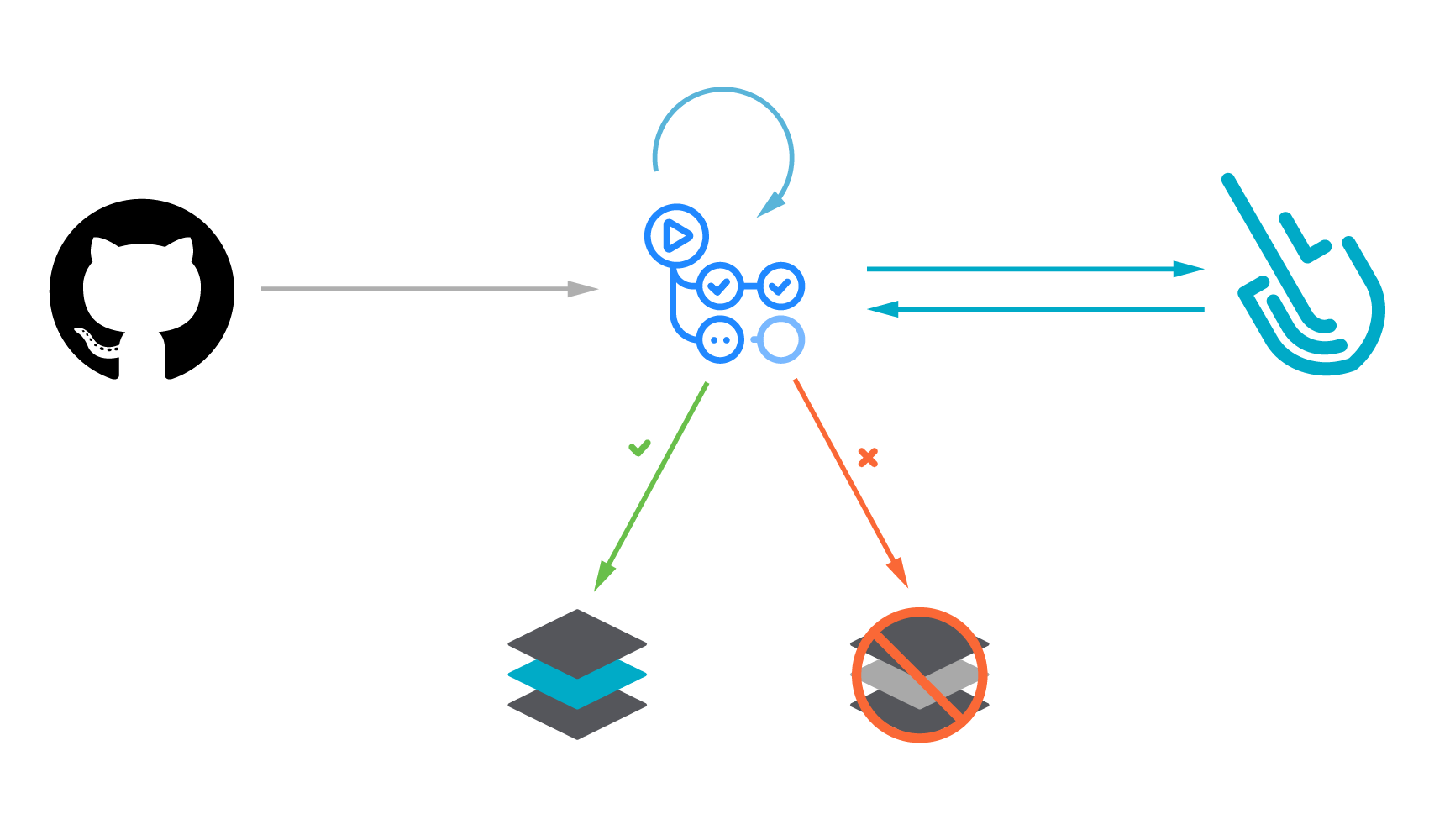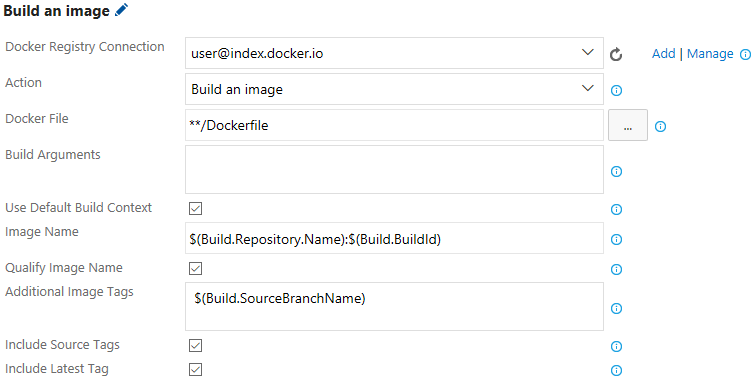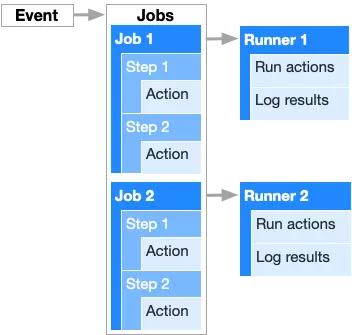Docker Build Push Action
Docker Build Push Action is a GitHub action that allows you to automate the process of building and pushing Docker images to a container registry. It simplifies the workflow by eliminating the need for manual execution of these tasks, thereby improving productivity and saving time.
1. What is the Docker Build Push Action?
The Docker Build Push action is a GitHub action that enables users to build and push Docker images to a repository, such as Docker Hub. It combines the functionalities of the common Docker commands `docker build` and `docker push` into a single action, making it easier to integrate Docker image building and pushing into your CI/CD pipelines.
2. Setting up Docker Build Push Action in a Workflow
To set up the Docker Build Push Action in a workflow, you need to include the action in your GitHub Actions YAML file. You can specify the Dockerfile location, the image name and tags, the registry credentials, and any additional build arguments or environment variables you want to pass to the build process.
Here is an example of how the Docker Build Push action can be added in a workflow:
“`yaml
name: Build and Push Docker Image
on:
push:
branches:
– master
jobs:
build_and_push:
runs-on: ubuntu-latest
steps:
– name: Checkout repository
uses: actions/checkout@v2
– name: Build and Push Docker Image
uses: docker/build-push-action@v2
with:
context: .
push: true
tags: user/repo:latest
“`
3. Customizing the Docker Build Process
With the Docker Build Push Action, you have the flexibility to customize the build process according to your requirements. You can specify build arguments, build-time environment variables, or even use a different Dockerfile for the build.
To customize the build process, you can add the necessary options in the `with` section of the action. For example:
“`yaml
steps:
– name: Build and Push Docker Image
uses: docker/build-push-action@v2
with:
context: .
push: true
tags: user/repo:latest
build-args: |
KEY1=value1
KEY2=value2
file: path/to/Dockerfile
“`
4. Configuring the Docker Push Process
The Docker Build Push action also allows you to configure the push process. You can specify the registry credentials, including the username and password, so that the action can authenticate with the container registry before pushing the image.
Here is an example of how to configure the push process:
“`yaml
steps:
– name: Login to Docker registry
uses: docker/login-action@v2
with:
registry: docker.io
username: ${{ secrets.DOCKER_USERNAME }}
password: ${{ secrets.DOCKER_PASSWORD }}
– name: Build and Push Docker Image
uses: docker/build-push-action@v2
with:
context: .
push: true
tags: user/repo:latest
“`
In this example, the `docker/login-action@v2` is used to authenticate with the Docker registry using the specified credentials stored in GitHub secrets.
5. Handling Authentication and Security
When using the Docker Build Push Action, it is essential to handle authentication and security properly. Storing sensitive information such as registry credentials in your workflow files is a security risk. It is recommended to store them as secrets in your GitHub repository settings and reference them in your workflows.
To create or manage secrets in your GitHub repository, navigate to the repository settings, and click on “Secrets” in the left-hand menu. You can then add or edit secrets according to your needs.
6. Best Practices for Docker Build Push Action
To make the most out of the Docker Build Push Action, here are some best practices to consider:
– Use separate actions for building and pushing: To maintain a clean and modular workflow, it is recommended to use separate actions for building and pushing Docker images. This allows you to reuse the build action across multiple environments or have different triggers for building and pushing.
– Leverage caching: Utilize caching mechanisms provided by Docker or GitHub Actions to improve build times. This can help in scenarios where dependent packages or layers haven’t changed between builds.
– Use specific version tags: Instead of using generic tags like “latest,” it is advisable to use specific version tags for your Docker images. This makes it easier to reference and track specific versions of your images.
– Automate image tagging: Consider automating the image tagging process based on your versioning or release strategy. This can be achieved by using environment variables or script-based logic in your workflows.
7. Troubleshooting Docker Build Push Action
If you encounter issues while using the Docker Build Push Action, consider the following troubleshooting steps:
– Verify the Docker version: Ensure that the version of Docker installed in your workflow environment is compatible with the Docker Build Push Action. You can check the action’s documentation for the supported Docker versions.
– Check permissions and registry access: Ensure that the Docker registry credentials provided in the workflow have the necessary permissions to push images to the repository.
– Review log outputs: Inspect the build and push logs to identify any error messages or warnings that can help in diagnosing the issue.
– Consult official documentation: If you’re experiencing specific problems or need further assistance, refer to the official documentation of the Docker Build Push Action or consult the GitHub community for help.
In conclusion, the Docker Build Push Action simplifies the process of building and pushing Docker images to a container registry, enhancing automation and productivity in CI/CD workflows. By following the best practices and addressing potential troubleshooting scenarios, you can effectively utilize this action to streamline your Docker image management processes.
Build \U0026 Push Docker Image Using Github Actions
Keywords searched by users: docker build push action GitHub action Docker, docker/login-action@v2, Docker metadata action 98669ae865ea3cffbcbaa878cf57c20bbf1c6c38, GitHub action build Docker image, Docker build, Docker hub, GitHub action docker-compose, GitHub action build docker image and push to ECR
Categories: Top 84 Docker Build Push Action
See more here: nhanvietluanvan.com
Github Action Docker
What are Docker containers?
Docker containers are lightweight, isolated environments that package an application and all its dependencies into a single portable unit. These containers can be run on any machine with Docker installed, regardless of the underlying operating system. Docker containers provide consistency and reproducibility, making it easier to manage and deploy applications in different environments.
What are GitHub Actions?
GitHub Actions is an automation platform provided by GitHub that allows developers to build, test, and deploy their code right from their repositories. With GitHub Actions, you can automate workflows, trigger actions based on events, and execute tasks in response to specific conditions. Whether you want to run tests, generate documentation, or deploy your application, GitHub Actions can help you automate these processes.
What is GitHub Actions Docker?
GitHub Actions Docker is the integration of Docker containers with GitHub Actions. It allows you to run actions inside Docker containers, providing an isolated and consistent environment for your tasks. By using Docker containers in GitHub Actions, you can ensure that your actions are executed in the same environment every time, regardless of the host machine. This ensures reproducibility and eliminates dependency issues that may arise from different development environments.
Why use Docker containers in GitHub Actions?
Using Docker containers in GitHub Actions offers several advantages. First and foremost, it provides a consistent and reproducible environment for your actions. You can define the exact dependencies and configurations needed for your tasks, regardless of the host machine. This eliminates the “it works on my machine” problem and ensures that your actions run smoothly across different environments.
Secondly, Docker containers are lightweight and easily portable, making it easy to share and distribute your workflows. You can package your actions and their dependencies into a Docker image, which can be easily pushed to a container registry and pulled by other developers or CI/CD systems.
Lastly, Docker containers enable you to take advantage of the vast Docker ecosystem. There are thousands of pre-built Docker images available on Docker Hub, covering a wide range of tools and technologies. Instead of reinventing the wheel, you can leverage these existing images to speed up your workflows and simplify your setup process.
How to use Docker containers in GitHub Actions?
Using Docker containers in GitHub Actions is straightforward. To get started, you first need to define your workflow file (e.g., `.github/workflows/main.yml`) in your repository. Inside this file, you can specify the jobs and steps required for your workflow.
To run an action inside a Docker container, you need to use the `docker://` syntax in the `uses` field. For example:
“`yaml
jobs:
build:
runs-on: ubuntu-latest
steps:
– name: Check out code
uses: actions/checkout@v2
– name: Run tests
uses: docker://node:14
with:
args: npm test
“`
In this example, the `node:14` Docker image is pulled from Docker Hub and used to execute the `npm test` command. The `docker://` syntax tells GitHub Actions to run this action inside a Docker container.
FAQs
1. Can I use my custom Docker image in GitHub Actions?
Yes, you can use custom Docker images in GitHub Actions. You can either build your custom image within your workflow or use a pre-built image from a container registry. Simply specify the image name and tag in the `docker://` URL.
2. Can I pass environment variables to Docker containers in GitHub Actions?
Yes, you can pass environment variables using the `env` field in your workflow. These variables will be available inside the Docker container during execution.
3. Can I mount volumes inside Docker containers in GitHub Actions?
Yes, you can mount volumes inside Docker containers in GitHub Actions. You can use the `–volume` flag to mount directories or files from the host machine into the container.
4. Can I execute multiple Docker containers in parallel in GitHub Actions?
Yes, you can execute multiple Docker containers in parallel by defining multiple jobs in your workflow. Each job can use a different Docker image and execute independent actions.
5. Can I use Docker Compose in GitHub Actions?
Yes, you can use Docker Compose in GitHub Actions. You can install and configure Docker Compose within your workflow and then use it to define and run multi-container applications.
In conclusion, GitHub Actions Docker provides a powerful and flexible way to automate your workflows using Docker containers. By leveraging Docker’s isolation and portability, you can ensure consistent and reproducible execution of your actions. With the ability to use custom images, pass environment variables, and mount volumes, GitHub Actions Docker offers great flexibility for building, testing, and deploying your applications.
Docker/Login-Action@V2
Managing containers efficiently is essential for developers as they strive to create scalable and robust applications. Docker, a popular containerization platform, has revolutionized the way developers build, ship, and run applications. It enables easy deployment and eliminates many of the challenges associated with traditional app management. With the rapid growth of containerization technology, Docker has become an indispensable tool for developers worldwide.
One critical aspect of Docker is the login process, which grants access to Docker repositories and ensures secure container management. Docker/Login-Action@v2 is a GitHub Action that simplifies the Docker login process, streamlining container management for developers. In this article, we will explore the functionality and benefits of Docker/Login-Action@v2 and address frequently asked questions to provide a comprehensive understanding of this valuable tool.
What is Docker/Login-Action@v2?
Docker/Login-Action@v2 is a GitHub Action that automates the Docker login process by authenticating an account with Docker Hub or any private Docker registry. This action enables developers to utilize Docker commands seamlessly, eliminating the need for manual authentication and saving valuable time. By incorporating this action into GitHub workflows, developers can ensure secure and efficient container management.
Features and Benefits of Docker/Login-Action@v2
Seamless Docker Authentication: Docker/Login-Action@v2 provides a streamlined authentication process, making it effortless for developers to access Docker repositories. It automatically authenticates the account associated with the Docker registry, removing the need for manual processes. This simplification improves developer productivity and enables rapid iteration and deployment.
Private Docker Registry Support: Apart from Docker Hub, Docker/Login-Action@v2 supports authenticating with private Docker registries. Developers can effortlessly integrate with various private registries using the same action, ensuring a unified authentication process across different projects.
Enhanced Security: By incorporating Docker/Login-Action@v2 into GitHub workflows, developers can ensure the secure handling of Docker credentials. This action integrates seamlessly with GitHub’s built-in secrets, allowing developers to store and manage Docker login credentials securely. This integration ensures that sensitive information remains encrypted and is not exposed to unauthorized individuals.
Simplified Workflow Configuration: Docker/Login-Action@v2 simplifies the setup of Docker-related workflows by removing the need for complex scripting. Developers can easily integrate it into existing workflows or create new ones with minimal effort. This simplicity further accelerates development processes and reduces the risk of errors or misconfigurations during the setup.
Efficient Collaboration: Docker/Login-Action@v2 enables smooth collaboration among team members by providing a consistent and standardized approach to Docker authentication. It ensures that all developers working on a project have the same Docker credentials, reducing discrepancies and potential bottlenecks caused by manual authentication.
Cost-Effectiveness: As Docker/Login-Action@v2 eliminates the need for manual authentication and streamlines workflows, it ultimately saves valuable development time. The time saved leads to increased productivity and cost-effectiveness for organizations. Developers can focus on writing code and improving applications rather than managing authentication processes.
Frequently Asked Questions (FAQs)
Q1. Can Docker/Login-Action@v2 be used with any CI/CD tool other than GitHub Actions?
No, Docker/Login-Action@v2 is designed specifically for GitHub Actions and is not compatible with other CI/CD tools. It leverages GitHub’s functionalities, including secrets management, to provide a seamless Docker login process within the GitHub ecosystem.
Q2. Are Docker authentication credentials stored securely when using Docker/Login-Action@v2?
Yes, Docker/Login-Action@v2 integrates with GitHub’s built-in secrets, ensuring the secure storage and handling of Docker authentication credentials. This integration encrypts sensitive information, safeguarding it from unauthorized access.
Q3. Can Docker/Login-Action@v2 authenticate with multiple private Docker registries simultaneously?
Yes, Docker/Login-Action@v2 supports multiple private Docker registries. Developers can easily configure this action to authenticate with any private registry by providing the necessary credentials.
Q4. Is Docker/Login-Action@v2 compatible with Docker CLI versions other than the latest one?
Yes, Docker/Login-Action@v2 is designed to be compatible with all versions of Docker CLI. It maintains backward compatibility, ensuring that developers can seamlessly incorporate it into their workflows, regardless of the Docker CLI version being used.
Q5. Can Docker/Login-Action@v2 be used with self-hosted GitHub Actions runners?
Yes, Docker/Login-Action@v2 can be used with self-hosted GitHub Actions runners. It supports both the GitHub-hosted runners and self-hosted runners, providing flexibility to developers in various deployment environments.
Conclusion
Docker/Login-Action@v2 simplifies the Docker login process, allowing developers to focus on building and deploying applications rather than managing container authentication manually. With its seamless integration into GitHub workflows and support for Docker Hub and private registries, this action enhances security, collaboration, and productivity. By adopting Docker/Login-Action@v2, developers can streamline their container management processes, ensuring efficient and secure deployment of applications in a Dockerized environment.
Images related to the topic docker build push action

Found 10 images related to docker build push action theme































Article link: docker build push action.
Learn more about the topic docker build push action.
- Introduction to GitHub Actions | Docker Documentation
- Use Github Actions to build and push Docker images
- Automate Docker Image Builds and Push to GitHub Registry …
- How to push docker image using GitHub actions
- Automating Docker Builds with GitHub Actions – Kubiya
- docker – GitHub build-push-action and gha cache, should I set …
- docker/build-push-action can not work in latest version #119
See more: https://nhanvietluanvan.com/luat-hoc